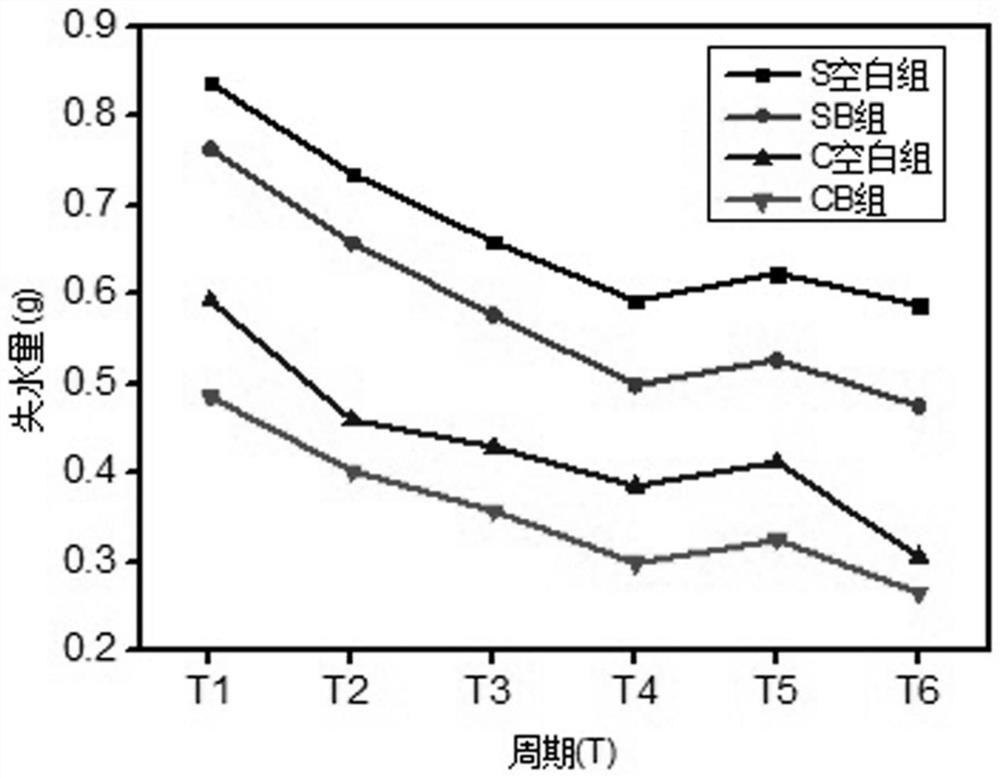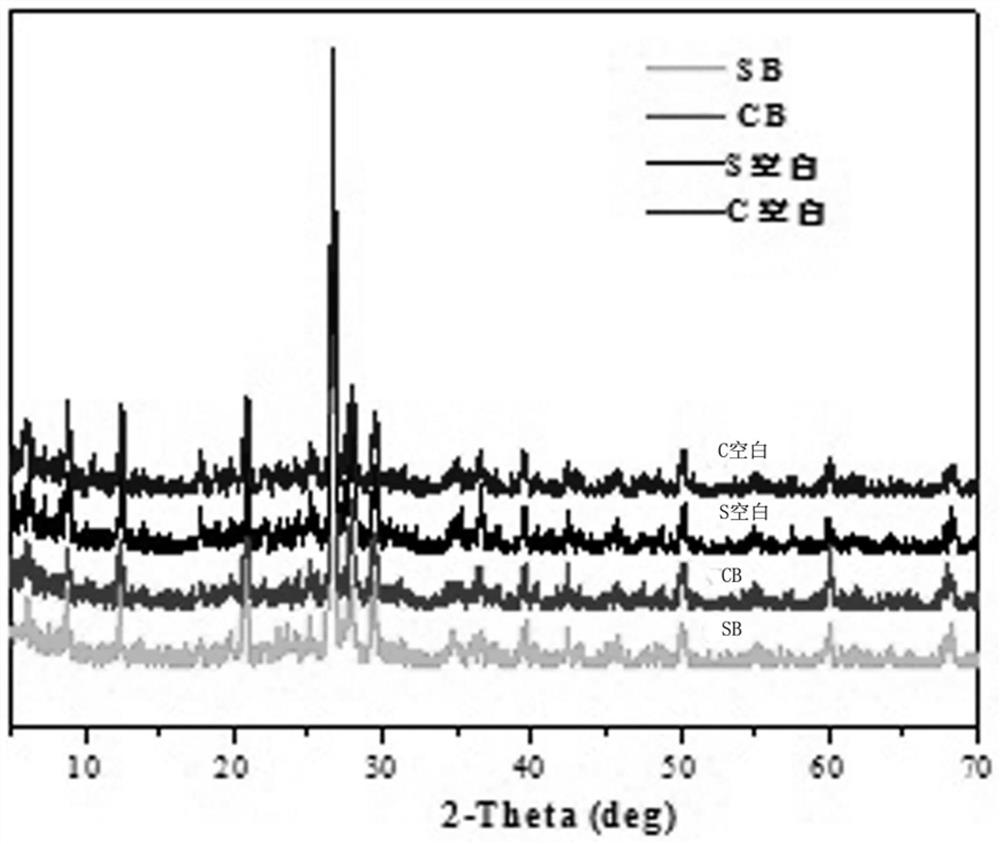Salt damage prevention method for earthen archaeological site cultural relic protection
A technology for the protection of cultural relics and earthen ruins, applied in the field of cultural relics protection, can solve the problems of lack of anti-microbial growth, etc., and achieve good practicability, low cost, and the effect of inhibiting salt damage to cultural relics
- Summary
- Abstract
- Description
- Claims
- Application Information
AI Technical Summary
Problems solved by technology
Method used
Image
Examples
Embodiment 1
[0029] Embodiment 1 A kind of anti-salt damage method for the protection of cultural relics of earthen sites
[0030] This embodiment is a method for preventing salt damage for the protection of cultural relics of earthen ruins. It is carried out according to the following steps: after scraping off the dust and moss on the surface layer of the salt damage crisp powder of cultural relics of earthen ruins, spray evenly on the position containing 200g / L sodium octaborate water-ethanol solution, the volume ratio of solvent water and ethanol is 1:1, every 100cm 2 Spray 100mL of the solution and let it dry naturally; repeat 3 times.
Embodiment 2-4
[0031] Embodiment 2-4 A kind of anti-salt damage method for the protection of cultural relics of earthen sites
[0032] This embodiment is a method for preventing salt damage used in the protection of cultural relics in earthen ruins. Their operation steps are basically the same as in Embodiment 1, and the difference is only in the amount of raw materials and process parameters. See the following table for details:
[0033] Each raw material consumption and process parameter list in the embodiment 2-4 of table 1
[0034]
[0035] Example 5 Application effect experiment (1) Freeze-thaw resistance cycle test and salt suppression effect test
[0036] Set up two groups of simulated samples and mark them as S group (S group is the sodium sulfate soluble salt experimental group) and C group (C group is the sodium chloride soluble salt experimental group), wherein each group is provided with 5 samples, each Each of the groups has one piece without any treatment as a blank sample,...
Embodiment 6
[0059] Embodiment 6 A kind of anti-salt damage method for the protection of cultural relics of earthen sites
[0060] This embodiment is a method for preventing salt damage used for the protection of cultural relics in earthen ruins, and it is carried out according to the following steps:
[0061] S1. After scraping off the dust and moss on the surface of the salt-damaged crispy powder part of the cultural relics of the earthen site, evenly spray the water-ethanol solution containing 100g / L sodium octaborate on the part, and the volume ratio of solvent water and ethanol is 1:1 , per 100cm 2 Spray 60mL of solution, then air dry naturally;
[0062] S2. Spray evenly on the part containing 15g / L Ba(OH) 2 Methanol solution, per 100cm 2 Spray 200mL of Ba(OH) on the surface of the soil site 2 solution; air-dried and sprayed with 20g / L H 3 PO 4 with 10g / L H 2 C 2 o 4 mixed ethanol solution, every 100cm 2 Spray 200mL of H on the surface of the soil site 3 PO 4 with H 2 C ...
PUM
 Login to View More
Login to View More Abstract
Description
Claims
Application Information
 Login to View More
Login to View More - R&D
- Intellectual Property
- Life Sciences
- Materials
- Tech Scout
- Unparalleled Data Quality
- Higher Quality Content
- 60% Fewer Hallucinations
Browse by: Latest US Patents, China's latest patents, Technical Efficacy Thesaurus, Application Domain, Technology Topic, Popular Technical Reports.
© 2025 PatSnap. All rights reserved.Legal|Privacy policy|Modern Slavery Act Transparency Statement|Sitemap|About US| Contact US: help@patsnap.com



